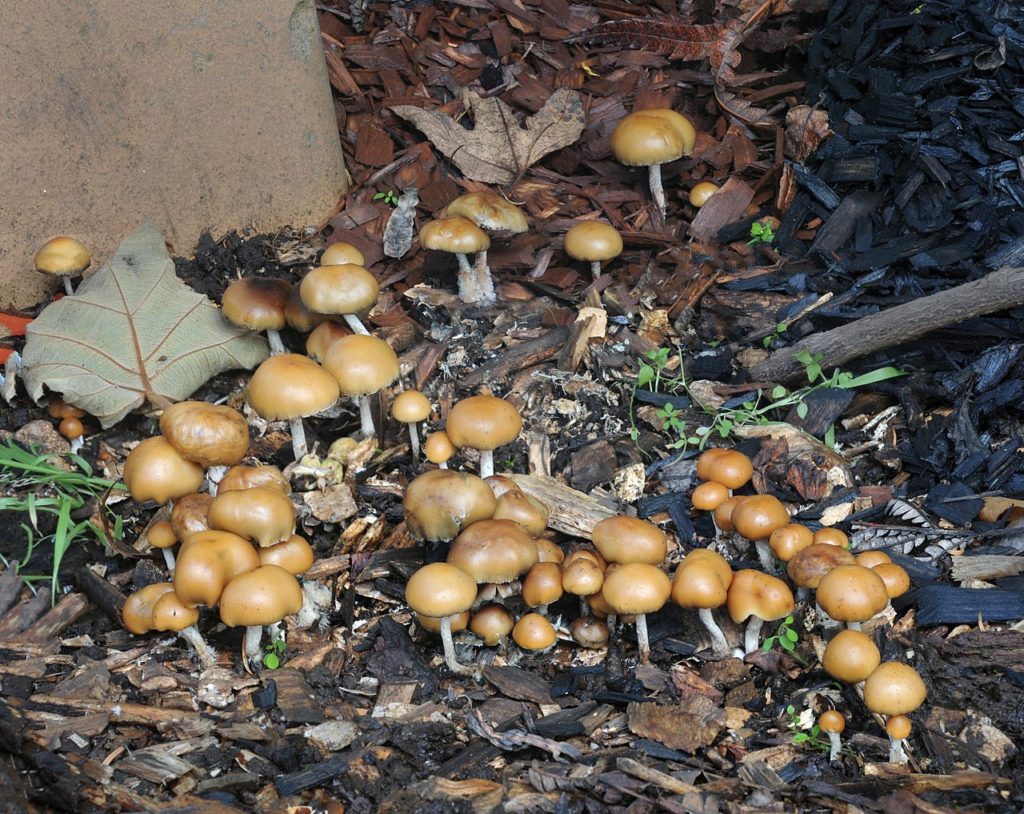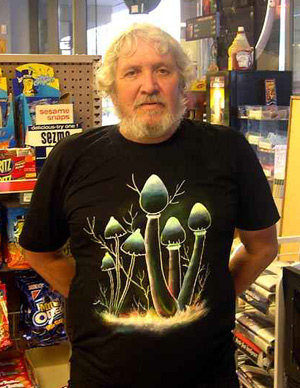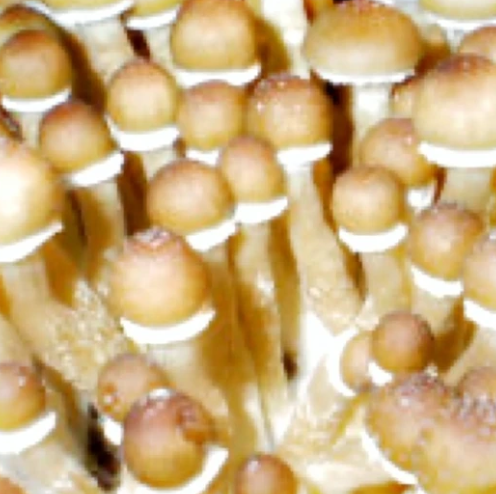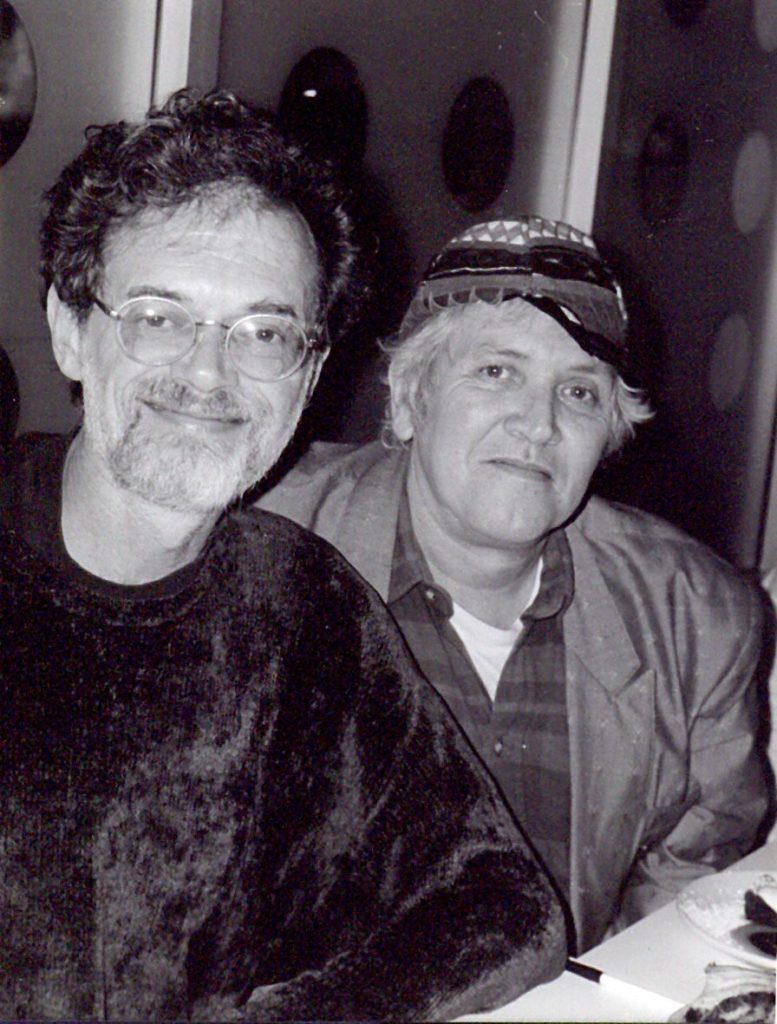Have you ever met anyone who has a mushroom named after them?
No? You’re about to. “Mushroom John” known for the John Allen Mushroom Strain.
John Allen Psilocybe Cubensis
We are, of course, talking about the one and only John W. Allen, who in certain circles is simply referred to as “Mushroom John”. He’s a man of many talents: author, artist, explorer, photographer, and ethnomycologist known for the John Allen Strain or John Allen Mushroom.
John Allen mushrooms, as related to John, has spent a lifetime traveling around the world, photographing and, in many cases, discovering new varieties of fungi everywhere from North America to Asia.

That bit about having a mushroom named after him? It’s true: Psilocybe allenii was named after John when he provided the type collection samples to researchers in 2012. It’s a beautiful fungi which grows all the way from British Columbia down to Los Angeles, and we can’t think of higher praise than naming it after a gentleman who has dedicated the larger portion of his life to fungi research.
You may recognize John’s name for his other work besides John Allen mushrooms, however. He’s credited as being the original creator of several famous exotic mushroom spore strains, many of which can be found in our very own collection here at Quality Spores, including the Burma mushroom, Pink Buffalo mushrooms, and the Cambodian mushroom strain.
However, legends and myths abound across the internet regarding these Cambodian mushrooms strains and especially the Allen strain, the larger-than-life stories attached to them perhaps intended to excite the imagination of those amateur microscopists shopping for their next specimen.
We wanted to get to the bottom of the John Allen cubensis topic Could any of these fantastic stories be true? The best way to find out, we figured, was to ask John himself, so we sent him an email—really only half-expecting a reply, since despite getting on in years, John is a busy man.
Imagine our delight when John replied. Not only did he reply, he graciously shared his time with us and provided many detailed and utterly fascinating explanations, stories, and opinions. As it turns out, the legends are (mostly) true.
We sincerely hope that the Quality Spores audience will enjoy this conversation regarding John W. Allen psilocybe cubensis as much as we did.
Note: At any point throughout this interview when the cultivation of fungi is discussed, the authors are of course referring to the practice having taken place in laboratory settings in jurisdictions where doing so is legal. Similarly, at any point where the consumption of special substances is discussed, the text only refers to settings where doing so is legal. It’s important to remember that John W. Allen has traveled to many different countries over the course of decades.
For more information about the legality of psilocybe-containing fungi, please see here and here. Other than a handful of grammatical corrections and redactions to protect the identity of third parties, our correspondence with John is proudly published here in full.

Did John W. Allen Really Discover the Pink Buffalo, Burma, and Cambodian Strains?
The first question we decided to ask John is one that many of us in the amateur microscopy community have often wondered about: is it true that he discovered all of those strains attributed to him?
The answer may surprise you—not only did John discover these strains (or in some cases, their progenitors), he played a key part in their original development. Here’s what we asked him:
There’s little information on the Internet about these discoveries, but they are frequently attributed to you. For example, regarding the Cambodian strain, the story goes that you were filming outside of Angkor Wat when you discovered this particular mushroom.
Pink Buffalo has even more legend attached to it, with stories claiming that you discovered the strain in a field in Thailand where a sacred pink buffalo had once been seen.
Are any of these stories true?
John W. Allen: I will begin with the Pink Buffalo strain instead of with Cambodian mushrooms. Let me begin by explaining that these Cambodian mushrooms strains were brought to the west by me. They were not just a mushroom growing wild in the rice paddies of South and Southeast Asia. Many people pick wild cubes [mushroom—ed.] and make massive spore prints of their local cubes in the Southeast USA from Florida to Texas, and north from Florida to South Carolina.
Over the years since the Internet, many vendors came online with outrageous claims of their cube strains that were meant to help sell their spore prints and spore syringes regarding the Allen psilocybe cubensis Allen strain. Many of those vendors were short lived, small companies who sold contaminated prints or were unsanitary in their printing methods. Good strains of cubes come from weeks and sometimes several months of hit or miss grow attempts.
The bigger the better.
John W. Allen
The strains brought by me were worked on in petri plates of different mediums such as PDA or PDY, adding certain chemicals to them to induce their growth capacity. The way we did ours was to produce a good strain when the petri plates produce pinners and from spores obtained from very healthy, sturdy, solid stems and caps that were clean and perfect in shape and size. The bigger the better. Caps are swabbed with Lysol disinfectant. Then the stipe is cut with a sterile Exacto blade and the spores are obtained on a sterilized inoculating loop from the center of the cap where the stipe was removed from. That is the cleanest portion to obtain uncontaminated spores from. Then the spores are smeared into a petri plate of agar.
Eventually the mycelia will grow into Cambodian Mushrooms, and various mycelia forms will eventually appear. Then at times pinners will appear. The largest pinner in a petri plate was the one used to clone a jar of spawn with. We used pasteurized rye berry seed in one pound bags and a special compost. If the mushroom is a large sized specimen with a 3-6 inch diameter cap, then you can get such large specimens to grow. Many attempts eventually produce a good strain. That is what we do to produce such strains.

Now that John has set the scene by describing his methodology and high standards, he goes on to tell us about the true story behind the Pink Buffalo strain.
John W. Allen: Now, in the late 1990s on one of my foray expeditions in Thailand/Cambodia, a participant, [redacted] and I were going to Ban Phang Ka off of Highway 4173 on Koh Samui Islands West Shoreline area. This is where there is a road that is bordered on each size by giant sculpted elephants.
To the right of the road were two rice paddy squares where a single Pink Buffalo was grazing. It was unusual because the property was fenced in with barbwire. Thai people do not use barbwire, but foreign immigrants do. In Thailand, no one can own property unless they are born Thai. So, when Australian and/or German immigrants marry Thai, the wife is the property owner by law. So foreign immigrants who marry Thai generally put up fences around their homes if the family has any four-legged ruminants.
Now, about the Pink Buffalo. No buffalo in Thailand are sacred. Of course, in India, cows are sacred, but buffalo are not. Also there are approximately 70 million buffalo in Thailand and one out of every ten buffalo is pink. [So much for the “sacred Pink Buffalo” story we’ve all seen used to describe the origins of this spore strain!—ed.]
The owner of the two rice paddies and home was an Australian man who later divorced his Thai woman, whereupon she retained the property after he returned to Australia. This happens a lot in Thailand. A result of culture shock. So that [property in Thailand] is where the Pink Buffalo strain sold on the internet came from.
The Angkor Wat strain [commonly referred to as simply “Cambodian”—ed.] came from a 2000 trip to Cambodia. It was found near Angkor Wat in Siem Riap, Kampuchea (Cambodia).
The Burma Strain came from a border village off the Thailand/Burma border when I had to go across the Freedom Bridge to get my visa renewed. I spent an hour there and was seeking a source for star rubies which are very cheap. [Star rubies are a variant of the ruby gemstone, high quality specimens of which can be sourced in the Chanthaburi Province of Thailand.—ed.]
What John Thinks About the Changing Legal Framework Surrounding Psilocybe and Mushrooms
The laws surrounding psilocybe and liquid crystal mushroom spores seem to be changing so rapidly within just the past few years that it can be hard to keep up with.
Here on The Psilocybe Philosophy, the Quality Spores blog, we’ve discussed the current goings-on as often as possible, such as with our coverage of the Washington D.C. and Oregon psilocybe initiatives, proposed or enacted changes in New Jersey, Hawaii, Florida, and Connecticut, and the ongoing policy recommendations of the Psilocybe Policy Mushroom Review Panel, established after Denver passed the historic Initiative 301 and became the first city in the US to decriminalize psilocybe mushrooms.
…And all of that still isn’t anywhere near a comprehensive overview—at the time of this writing around 100 city jurisdictions throughout the country are at least considering special decriminalization.
John has been a member of the fungi community for decades, rubbing shoulders with the likes of Terence and Dennis McKenna, Jonathan Ott, Paul Stamets, and others. Here’s a video of him with some of the aforementioned at the 1994 Gathering of the Minds symposium at Chapman University in Los Angeles.
Naturally, we were curious about what John thinks of the current movements to see psilocybe decriminalized—if not outright legalized—in so many parts of the country.
Quality Spores: What do you think about the recent developments in the United States concerning psilocybe decriminalization and, in some cases, even legalization for therapeutic purposes? Do you think we will ever reach a point of full legalization of this wonderful and life-affirming compound?
John W. Allen: That is fine as long as no one overdoses on [mushrooms] or commits suicide, etc. In the UK, shrooms were legal to posses after 1976 when two high court justices ruled that “mushrooms were mushrooms and psilocine and psilocybe were chemicals.” In the 1980s, shroomers in the UK could pick liberty caps freely and only trespass was illegal.
However, the shrooms had to be fresh. So head shops in the UK began ordering shrooms from the Netherlands and began openly selling them in their stores. I did not approve of that. The greed of shroom vendors in the UK caused the law to change and prohibit the possession and sales of mushrooms. This was due to the fact that a stoned student fell accidentally or purposefully from a dorm window to his death. He purchased the shrooms at a head shop.
Before that, courts had ruled that one could sell the shrooms as long as they were fresh. So the vendors, many of them in the UK, sold to anyone who came in their stores. Then they grew them so they did not have to pay expensive prices to the Dutch.
Prior to the UK situation, shrooms were also sold openly in Japan and also in public vending machines, even at Narita Airport in Tokyo, along with beer or Hustler magazines for the traveler.
One day someone dosed a very popular Japanese teen pop star with a cup of hot chocolate or hot tea. The kid flipped out and was committed to a local sanitarium where he remained for two months before he was cured of his temporary insanity. So Japan then made the mushrooms illegal.
I was never for the legalization of Marijuana because I always believed that it should be like any plant such as grass or a rose or a bush, or a vegetable or a fruit. There should be no law against it or for it. The same with mushrooms. There should be no law for them or against them.
John W. Allen
And then in Amsterdam, a French teenage 17-year-old girl fell off of or jumped from a bridge to her death on shrooms purchased at a local Smart Shop. So on Dec 2 of 2008, The Dutch Parliament enacted a a law prohibiting the sale of mushrooms. Sadly, the Dutch used a paper by me, Gaston Guzman, and Jochen Gartz to ban 180 species of fungi in the Netherlands… including accidentally banning several species of edible shrooms.
That latter ban was really protested against by restaurant owners who no longer could have gourmet mushrooms on their menus. And yet they were not wise in that they forgot to ban spores, grow kits, and the sclerotia, and several species which are still legal in the Netherlands and yet no one else has died.
So I would hope we do not have similar problems once such entheogenic plants are made legal.
I was never for the legalization of Marijuana because I always believed that it should be like any plant such as grass or a rose or a bush, or a vegetable or a fruit. There should be no law against it or for it. The same with mushrooms. There should be no law for them or against them. It should be the same as the law that the two high court justices in the UK originally said.

Mushroom Misunderstandings: The Perspective of an Undisputed Fungi Expert
True experts can often see things that the average person cannot. Maybe it’s experience, an accumulated breadth of knowledge, or the intuition that comes with intense familiarity on a subject—either way, we wanted to know where John thinks the general public is going wrong, and hopefully we can assimilate his advice.
Quality Spores: You are an undisputed fungi expert. What is the #1 thing that people misunderstand about mushrooms, special or otherwise? What do you wish the average person had a better understanding of, insofar as fungi is concerned?
John W. Allen: I wish that they would read the literature that I read to learn about the mushrooms. Also they should attend many of the various workshops and/or symposiums or conferences and listen to what the scholars and others have to say and teach about the mushrooms.
Many shroomers ask me about them over the years and I give them good advice but they usually still do things the way they want to. People ask me how to take them and I explain the methods I use and then they do them the way they want to anyway. Same with finding the mushrooms. I tell them how, and describe what they should look for and what to read about and how to find and identify them, and then they say “We do not need to read about them. Can you tell us where they are growing?”
I get a lot of similar questions and many tell me they do not see the visuals that the shrooms are famous for. They eat them in the daytime, with lights on. If one has total or near darkness then they can see the visuals. Of course I tell them often, “Maybe you are not meant to see them.”
I further explain that the Mazatec and other tribal groups in Mesoamerica consume their mushrooms in total or near darkness, and that they have been doing so for at least 2000 years, adding that there must be a reason why they eat them in darkness… and maybe that is why you do not see anything—because you take them the way you want to and not in total darkness.
Same with consumption. The indigenous tribals take 20-30 minutes to consume a dosage. They must be doing so as they have for over 2000 years because the effects come on slow, in waves and ripples, and are most profound and last for 4-6 hours.
When consumed in a tea or smoothie, [the effects come on] very fast and cause anxiety attacks and some paranoia. So I tell them that, and they still gobble them down and for the first half hour, many have uncomfortable effects.
More About John W. Allen and How to Study The Mushroom Spore Strains He Discovered
We cannot thank John enough for speaking with us—it has been a true honor.
To learn more about John, you can visit him on YouTube, Twitter, or the archived version of his website.
